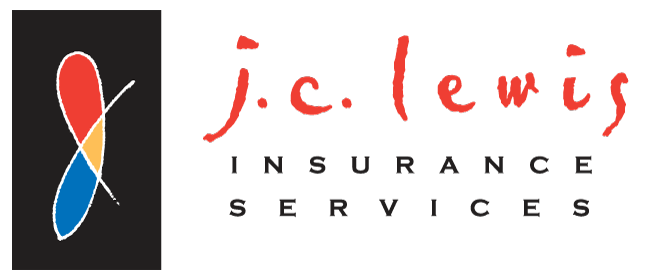Understanding health coverage and health insurance policies can be challenging, difficult, and – for some – overwhelming.
However, it is also a topic anyone can become knowledgeable of and familiar with. Especially when it is put in simple terms. Such as this explanation offered by one source,
“Health insurance is a plan, or policy, that covers a percentage of doctors’ visits and hospital bills. It exists to help offset the costs of medical events, whether they’re planned or happen unexpectedly.”
While it might be helpful at times to have a health insurance glossary to help with the confusing health insurance terminology, there are other issues that matter more.
With that in mind, let’s look at five things you should understand about your health insurance.
How Much Does Health Insurance Cost You?
All health insurance plans come with a cost. If you are lucky and your employer covers all the monthly costs, you will still see some expenses as you make use of your health insurance from time to time. But here is a brief overview of the basic costs to you:
Premium
This term is easy to understand for most. It is the cost of the set monthly payment you make to have your health insurance plan. Premium payments do not count towards deductibles or out-of-pocket-maximums. (see below)
Deductible
This is the amount you pay for covered health care services before your insurance plan starts to pay. For example, a $4,000 deductible means you pay the first $4,000 of covered services yourself for the year. Copays and premiums usually don’t count towards deductibles.
Co-payment or Co-pay
This is a fixed amount you pay for a covered service. If your co-pay is $20, that means you pay $20 at the time of each visit. Some plans have no co-pays and for some plans you don’t have to pay a copay until you reach your deductible.
Coinsurance
This is the percentage of a covered health care service cost you pay after you’ve met your deductible. If your coinsurance is 20 percent as with an 80/20 plan, for example, and your total fee for a visit is $100 total, you would be billed $20 and the insurance pays $80.
Out-of-pocket maximum
This is the most you must pay for covered services in a plan year. If your out-of-pocket maximum is $5,000, once you have spent $5,000 on deductibles, copayments, and coinsurance, your health plan will pay 100 percent of the remaining costs of covered benefits for the year.
What Prescriptions Are Included in The Plan Formulary
If your health insurance offers prescription drug coverage, it will also have a formulary or a list of prescription drugs covered by the prescription drug plan or another insurance plan offering prescription drug benefits.
Also called a drug list, this is essentially a list of the drugs that the plan covers, and how much your share of the cost will be for specific drugs.
Understanding your plan’s prescription drug formulary is important to your health and to save money. The more you know about your prescription drug coverage, the better equipped you will be to make choices.
What Services Does Your Plan Cover?
When you buy a plan through the Health Insurance Marketplace, for example, your insurance will cover basic preventive services. It will also cover the ten essential health benefits, or EHBs, that are required by the Affordable Care Act (ACA):
- Ambulatory patient services (outpatient care you get without being admitted to a hospital).
- Emergency services.
- Hospitalization (such as surgery).
- Pregnancy, maternity, and newborn care (care before and after your baby is born).
- Mental health and substance use disorder services, including behavioral health treatment (this includes counseling and psychotherapy).
- Prescription drugs.
- Rehabilitative and habilitative services and devices (services and devices to help people with injuries, disabilities, or chronic conditions gain or recover mental and physical skills).
- Laboratory services.
- Preventive and wellness services and chronic disease management.
- Pediatric services, including oral and vision care
Adult dental and vision coverage are not included as EHBs. Not everything you might need is necessarily covered either.
Keep in mind that a medical necessity is not the same as a medical benefit.
A medical necessity is something that your doctor has decided is necessary for you, while a medical benefit is a service or product that your insurance plan has agreed to cover. In some cases, your doctor may decide that you need medical care that is not covered by your insurance policy.
It’s important to understand that all insurance companies determine what tests, drugs, and services they will cover aside from the ten essential health benefits mandated by the ACA.
These choices are based on their understanding of the kinds of medical care that most patients need., and those choices may mean that the test, drug, or service you need isn’t covered by your policy.
How Your Plan Network Operates
Most health insurance plans have an associated network of healthcare providers, but it is important to understand that the requirements for using plan networks vary based on the type of plan.
Here are the most common healthcare plan types in California:
- HMO stands for health maintenance organization, and the plans typically provide members with lower out-of-pocket expenses, such as monthly premiums, but may provide fewer options such as being able to choose a primary care physician (PCP) or hospital. With an HMO plan, visits to specialists require a referral from a member’s doctor.
- PPO, or preferred provider organizations, do not typically require members to choose a PCP so they can choose to see any doctor or specialist within their network. PPO plan members are, however, encouraged to use doctors and hospitals within their preferred network.
- EPOs are exclusive provider organizations that have a network of physicians that their members are required to use except in the case of emergency. Employee members also have a PCP who provides referrals for in-network specialists.
- POS, or point of service, plans are not as common. A POS plan usually combines features of both HMO and PPO plans, and a POS plan may require members to choose a Primary Care Physician (PCP) from their network of providers.
- HDHP, or a high-deductible health plan, can be a lower-cost alternative allowing members to pay less for their insurance. An HDHP is often offered as an option with HMO, PPO, EPO, or POS plans.
The Health Exchange Marketplace and Different Types of Health Plans
According to the IRS, the Health Insurance Marketplace — also known as the Health Insurance Exchange — is the place where people without healthcare insurance can find information about health insurance options and also purchase healthcare insurance.
In California, our health insurance exchange is known as Covered California.
To be eligible to enroll in health coverage through the Health Insurance Marketplace, you must live in the United States and be a U.S. citizen or national (or be lawfully present).
Health coverage plans in the Marketplace are presented in four “metal” categories:
- Bronze
- Silver
- Gold
- Platinum
Metal categories are based on how the costs of your healthcare are split between you and your plan. The categories have nothing to do with quality of care provided.
Because every individual or family has somewhat different healthcare coverage needs, the categories are designed to provide a better fit for everyone seeking a health insurance policy.
Here is an overview of each metal category based on information provided by the HealthCare.gov website:
Bronze
- Lowest monthly premium
- Highest costs when you need care
- Bronze plan deductibles can be thousands of dollars a year
- A good choice if you want a low-cost way to protect yourself from worst-case medical scenarios, like serious sickness or injury – your monthly premium will be low, but you’ll have to pay for most routine care yourself.
Silver
- Moderate monthly premium
- Moderate costs when you need care
- Silver deductibles are usually lower than those of Bronze plans
- A good choice if you qualify for “extra savings” — or, if not, if you’re willing to pay a slightly higher monthly premium than Bronze to have more of your routine care covered.
Gold
- High monthly premium
- Low costs when you need care
- Deductibles are usually low.
- A good choice for those who are willing to pay more each month to have more costs covered when getting medical treatment.
Platinum
- Highest monthly premium
- Lowest costs when you get care
- Deductibles are very low, which means your plan starts paying its share earlier than for other categories of plans.
- A good choice if you need a great deal of care and are willing to pay a high monthly premium with most all the other costs being covered.
You Don’t Have To Do It Alone
While it’s certainly possible to buy your California health insurance plan on your own, it’s not a simple process.
The good news is that an experienced and licensed California health insurance agent can help you sort through the variety of different health insurance plans available to find one that fits your needs and budget.
In addition, letting a health insurance agent deal with the delays and technicalities will help make the purchasing process easier for you in several ways.
J.C. Lewis Insurance Services, for example, is a family-owned business of agents and brokers, which gives us access to numerous health insurance plan options and types, and this is a huge benefit to you. Working with a local health insurance company like J.C. Lewis means getting answers to your questions such as which policies will best fit your needs, or that your employees will benefit most from.
In addition, we will work with you to save you the most money and still get the best coverage options for you, your family, or your employees.
Sonoma County’s Local Experts for California Medical Insurance
JC Lewis Insurance is a long-time family-owned firm made up of expert brokers and based in Sonoma County. We offer California health insurance plans from only the leading health insurance carriers that are licensed to do business in California.
In addition to being experienced, professional brokers, we are licensed and certified by each of these insurance carriers to offer coverage to individuals, families, and small group employers in addition to Medicare supplemental and prescription drug plans for seniors.
Perhaps you are self-employed, or your employer doesn’t provide health benefits. That’s when an individual or family plan can be the best option for you, or you and your family.
When you’re shopping for medical insurance for you and your family, you are likely to have several questions and concerns. That’s great because we welcome your questions about health coverage insurance and you can be confident that JC Lewis Insurance Services will help you find the right solution.



